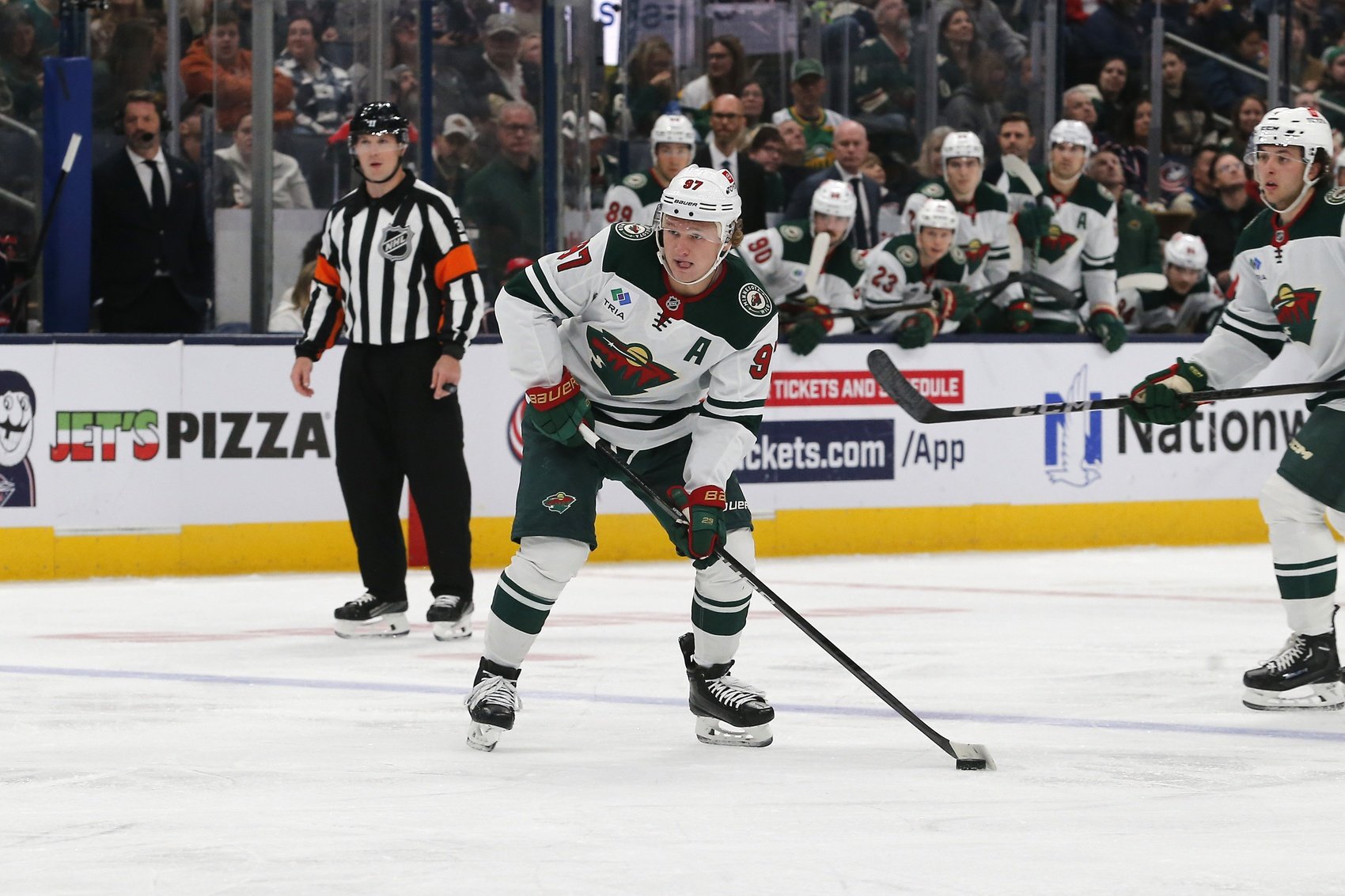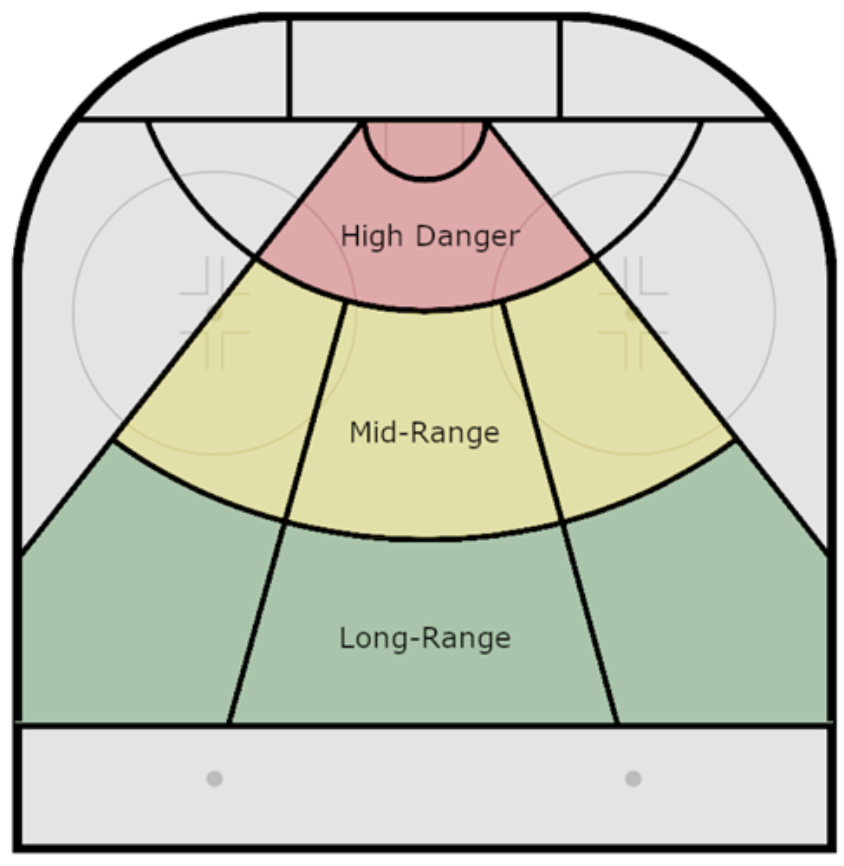The Minnesota Wild are off to a good start this season with 4 regulation wins, 2 overtime losses, and 0 regulation losses. While this is promising, the Wild will still need to improve if they’re going to make the playoffs this year.

Minnesota had a strong power play last season and has started this season with an even better one. In the 2023-24 season, the Wild was 8th in the league for power-play goals (PPG), scoring 62 total. Their power play percentage (PP%) was 22.7%, putting them 10th in the league. This season, Minnesota is 5th in the league for PPG with 5 goals and 4th for PP% with 31.3%.
Many elements create a successful power play. Does the Wild’s success come from a great power play strategy or loading all the stars on one line?
Below are the Wild’s power play lineups from last Saturday:
Power Play 1:
- Mats Zuccarello - Joel Eriksson Ek - Kirill Kaprizov
- Brock Faber - Matt Boldy
Power Play 2:
- Marcus Johansson - Marco Rossi - Frederick Gaudreau
- Declan Chisholm - Liam Ohgren
The first power play unit is stacked, and the second unit also has scoring ability. Mats Zuccarello had 68.1% offensive zone time on the power play last season, tying him and Carolina Hurricanes's Andrei Svechnikov for first place. Kirill Kaprizov was 7th in the league for high-danger goals (23), and Joel Eriksson Ek was 4th for high-danger shots on goal (131) last season.
The NHL’s definition of a high-danger shot is a shot taken from the area within 29 feet of the center of the goal and bound on both sides by an imaginary line drawn from the faceoff dot to 2 feet outside the goalpost.

The players' talent is crucial to the success of the Wild’s powerplay. Still, their systems help them get the edge on often equally talented penalty kill lines.
To examine what makes the Wild successful, I will break down their power play into three parts: breakout, zone entry, and offensive zone play.
Breakouts can take up a significant amount of time in a powerplay, especially when there are many drop passes backward. However, Minnesota effectively uses this tactic to create space. Generally, the Wild breakout consists of a puck carrier and one or two far-side players as outlets.
Players also cross behind the puck carrier to pick up a drop or backward pass in case of pressure. The drop pass can be difficult to defend because the new puck carrier moves in a different direction, and the opposing team no longer blocks the correct passing lanes. The Wild often catch their opponent flat-footed by making multiple drop passes.
However, Minnesota’s zone entry below highlights the downside of drop passes in the breakout. The outlet players are already near the blue line when they make the pass, forcing them to slow down to avoid an offsides call or loop back. Either way, it makes an outlet pass more difficult, and the Wild have difficulty entering the zone.
An example of the drop pass was during the Wild’s October 10 game against the Columbus Blue Jackets when Faber made a drop pass to Kaprizov. It was a risky pass because a Blue Jackets player was directly behind him and nearly picked off the pass for a breakaway. Instead, Kaprizov carried it over the blue line and made a very clean backhand pass to Hartman through 3 players to Ryan Hartman, who scored.
Power play goal for Minnesota!
Scored by Ryan Hartman with 16:10 remaining in the 1st period.
Assisted by Kirill Kaprizov and Brock Faber.
St. Louis: 0
Minnesota: 1#MINvsSTL #stlblues #mnwild pic.twitter.com/yGLTEqzcaH— NHL Goals (@nhl_goal_bot) October 15, 2024
Minnesota had a bit of luck on the play above. There were three Columbus players on Kaprizov, and one of them should have picked up Hartman instead.
So far this season, the Wild have shown solid control once in the zone. During last Saturday’s game against the Blue Jackets, they made tape-to-tape passes and were rarely knocked off the puck. Minnesota also consistently kept a right-handed player, often Kaprizov, on the defending goalie’s left, aka the backdoor.
Kaprizov’s goal with 17:09 left in the third period was a great example of this:
Kaprizov makes the Blue Jackets pay on the 5-on-3 with a booming one-timer 💥 pic.twitter.com/oB7cmpFLBT
— B/R Open Ice (@BR_OpenIce) October 20, 2024
Faber ends up with the puck off the faceoff, walks it across the blue line for a better angle, and sends it down to Kaprizov for a shot on net. Kaprizov scored, but if he hadn’t, it presented a great rebound for a net-front player to tap it in. Kaprizov is out of the “high danger” zone, meaning the opposition has left him uncovered. This is also a good tactic for getting pucks on net, regardless of if they’re on the power play.
Easily, the best power-play goal this season was from Filip Gustavsson against the St. Louis Blues on October 10, which I will continue to mention any chance I get. Gustavsson’s goal was the 1st in Wild history, the 15th goalie goal overall, and the 3rd power play goalie goal ever in the NHL. Afterward, Gustavsson joked in an interview with ESPN’s Emily Kaplan that he should be a part of the power play. He also mentions Marc-Andre Fleury encouraging him to do it.
Besides being an exciting goal, this play was an important insight into Minnesota’s mindset. Even a D3 college-level goalie should have some puck-handling skill to assist on breakouts.
Still, shooting it end to end is a difficult play to pull off, and a mishandle could have resulted in a St. Louis goal. It’s just not a play a team trying to mitigate risks makes. Neither Gustavsson nor the Wild are playing scared, so there is room for Minnesota to make these risky plays, which can result in a bigger payoff.
Minnesota’s talented power play units contribute to their success. Still, the team’s simple but effective tactics of opening the ice and willingness to try out risky plays make the Wild especially difficult to defend against.



